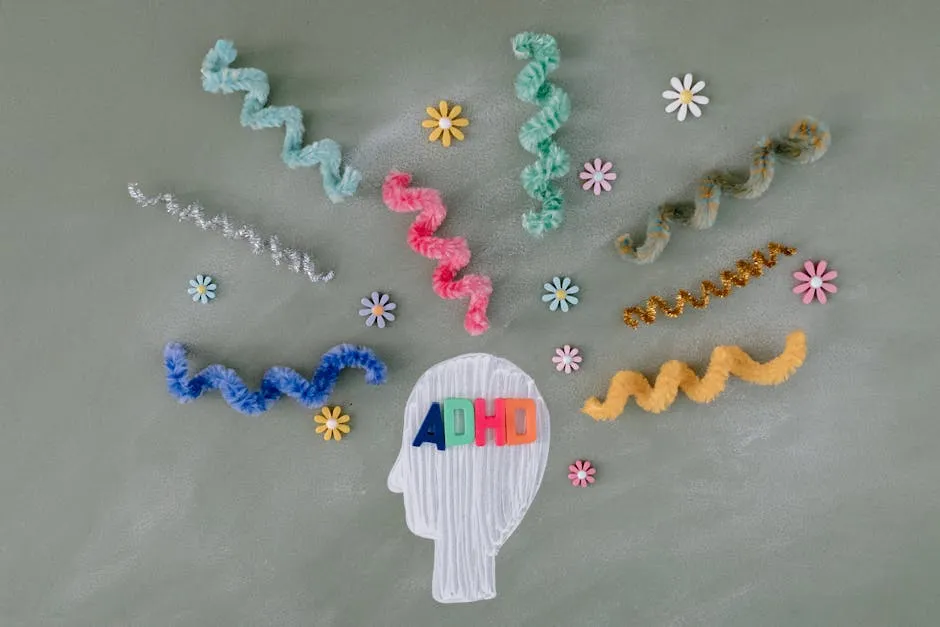What is an ABC Chart?
The ABC Chart is a fantastic tool for understanding children’s behavior. It stands for Antecedent, Behavior, and Consequence. This model breaks down behaviors into three key parts. By doing this, we can see what happens before a behavior (antecedent), the behavior itself, and what follows it (consequence).
Why is this important? Well, identifying the antecedent can reveal triggers. For example, if a child acts out after a loud noise, we know to consider sound sensitivity. The behavior itself is the action we want to analyze. Is it throwing things? Yelling? Finally, the consequence is what happens right after the behavior. Did the child get a reaction? Did they get what they wanted?
Using ABC Charts allows parents and educators to track behaviors over time. This helps in spotting patterns. When we see these patterns, we can create effective strategies to address the behavior. Instead of just reacting, we can understand what drives the behavior and respond more thoughtfully.

Role of ABC Charts
ABC Charts serve as observational tools. They help document behaviors systematically. This makes it easier to analyze trends and develop interventions. For instance, a teacher observing a student might notice that the child becomes disruptive during quiet times. By noting this in an ABC Chart, the teacher can develop strategies that avoid triggering the behavior.
Moreover, these charts can be crucial in various settings. They’re not just handy for classrooms; parents can use them at home, and therapists can apply them in clinical settings. The versatility of ABC Charts makes them a go-to resource for anyone wanting to manage challenging behaviors.
If you’re looking for tools to help your child focus better during these activities, consider investing in Noise-Canceling Headphones for Children. These headphones can significantly reduce distractions, allowing your child to concentrate better, especially in noisy environments.

Importance of Understanding Behavioral Patterns
Why bother with understanding behavioral patterns? Well, it’s simple. Knowledge is power! When we understand the “why” behind a behavior, we can tailor our responses. Instead of punishing a child for acting out, we can address the underlying issues.
For example, if a child often gets angry when asked to share toys, the antecedent might be the stress of not being in control. Recognizing this can lead to teaching sharing skills in a more positive way. Consequently, the child learns without feeling punished.
In summary, ABC Charts are invaluable for analyzing behaviors. They allow us to understand the triggers, the behaviors, and their consequences. This understanding helps create a supportive environment for children, leading to better outcomes for everyone involved. So grab your ABC Chart, and let’s get started on this journey to better behavior management!

Historical Context of ABC Charts
The journey of ABC Charts starts with B.F. Skinner, a famous psychologist. He introduced the concept of operant conditioning. His work laid the foundation for understanding behaviors through a three-term contingency—antecedent, behavior, and consequence. Skinner believed that behaviors could be shaped by reinforcement. This idea fundamentally changed how we view behavior analysis.
In 1968, Sidney Bijou took things further. He expanded on Skinner’s ideas, formalizing the ABC model in his research. Bijou emphasized the importance of structured observation. His contributions made it possible to document behaviors more effectively. This evolution paved the way for widespread use of ABC Charts in various contexts.
Today, ABC Charts are utilized across many fields—education, psychology, and beyond. Educators use them to monitor classroom behaviors. Parents apply them to understand their children better. Mental health professionals incorporate ABC Charts within therapeutic frameworks. They’re essential tools for anyone seeking to improve behavioral outcomes.
In educational settings, ABC Charts help teachers identify students’ needs. By collecting data, they pinpoint specific triggers and patterns. This process fosters a proactive approach to behavior management. Rather than reacting impulsively, educators can craft tailored interventions. This shift enhances the overall learning environment.

If you’re a parent looking to enhance your child’s learning experience, consider checking out Interactive Learning Tablets for Kids. These devices are designed to make learning fun and engaging, helping children develop essential skills while enjoying themselves.
In psychology, the ABC model aids in assessing challenging behaviors. It provides a clear framework for understanding the function of a behavior. This clarity is crucial for developing effective treatment plans. Therapists can analyze data to identify patterns, leading to meaningful interventions.
In summary, the historical context of ABC Charts reflects their evolution from Skinner’s foundational theories to modern applications. The insights gained from this model remain pivotal in addressing behavioral challenges today. Understanding the roots of ABC Charts enriches our appreciation for their role in behavior analysis.

Components of the ABC Model
Understanding the ABC model is like having a secret decoder ring for behaviors. It breaks down actions into three clear components: Antecedents, Behaviors, and Consequences. Let’s unpack each of these without getting lost in the weeds.
Antecedents
Antecedents are the events or conditions that occur right before a behavior. Think of them as the opening act before the main event. They set the stage for what happens next. Common triggers include:
- Hunger: When a child’s tummy grumbles like a bear, watch out! They might act out because they need a snack. Always a classic!
- Sensory Overload: Bright lights or loud noises can turn a calm kid into a whirlwind of chaos. Sensory overload is like throwing a party for behaviors—everyone’s invited!
- Routine Changes: Kids thrive on routine. Mess with it, and you might just see a meltdown. Kids can become like little tornadoes when their schedules go sideways.
By identifying these antecedents, caregivers can start to see patterns and prepare for potential behavioral storms.

Behaviors
Now, let’s get to the heart of the matter: the behaviors themselves. This is where things get real. Behaviors can be categorized into several types:
- Sensory-Seeking: Some kids are like little explorers, constantly seeking sensory input. They might spin, jump, or touch everything in sight. It’s their way of connecting with the world.
- Escape Behaviors: When faced with something boring or stressful, some children might try to escape. This could mean running away from the math worksheet or hiding under a desk.
- Attention-Seeking: Kids often crave attention like a plant needs sunlight. This can manifest as acting out in class or throwing tantrums. They’ve learned that being the center of attention—even if it’s for the wrong reasons—gets them noticed.
Understanding the type of behavior is crucial for deciding how to respond effectively.

Consequences
Consequences are what happens immediately after a behavior. They can either reinforce or deter future actions. Here are a few examples:
- Reinforcement: If a child throws a tantrum and gets a toy they wanted, guess what? They’ll likely repeat that behavior. It’s like giving them a golden ticket to repeat the chaos!
- Positive Feedback: When a child shares their toys and receives praise, they’re more likely to do it again. Positive reinforcement is like putting a star on their chart—it encourages good behavior!
- Timeouts or Punishments: Sometimes, consequences can be less than fun. If a child is reprimanded for yelling, they might think twice before doing it again. But be careful—too much punishment can backfire and lead to more issues.
Consequences shape behaviors like clay, molding them into future actions.

Case Studies
Real-life examples can shine a light on the effectiveness of the ABC model. Let’s look at a couple of scenarios:
- Classroom Disruption: A student consistently disrupts class during quiet work time. The teacher notes that the antecedent is the transition to independent work. The behavior is calling out, and the consequence is gaining attention from peers. By recognizing this pattern, the teacher can adjust the classroom routine to provide more engaging activities, reducing disruptions.
- Tantrum at Home: A child throws a tantrum when asked to clean their room. The antecedent is the request to clean. The behavior is the tantrum, and the consequence is receiving extra time on a video game. Recognizing this sequence can help parents decide to enforce consistent expectations, leading to fewer tantrums.
These case studies show that the ABC model can be a game changer in understanding and managing behaviors effectively.

If you’re looking for effective ways to help your child express their emotions better, consider a Kids’ Journal for Emotional Expression. Journaling can be a powerful tool for children to articulate their feelings and reflect on their experiences.
In summary, the ABC model provides a structured way to analyze behaviors. By identifying antecedents, understanding behaviors, and evaluating consequences, caregivers can develop targeted strategies. This approach not only helps manage challenging behaviors but also fosters a supportive environment where children can thrive. So grab your ABC Chart, and let’s turn those behaviors into opportunities for growth!

Practical Applications of ABC Charts
ABC Charts are not just theoretical—they’re practical tools that can make a real difference in various settings. Here’s how they’re used in educational settings, at home, and in therapy.
In Educational Settings
Teachers can use ABC Charts to manage classroom behaviors effectively. By documenting student actions, they can identify patterns. For instance, if a student frequently acts out during quiet activities, the teacher can adjust lesson plans or provide breaks. This proactive approach creates a more harmonious classroom environment.
Additionally, ABC Charts empower educators. They can share this information with parents during conferences. This collaboration helps everyone target the same goals, ensuring consistent strategies both at school and home.

At Home
Parents can also benefit from using ABC Charts. Picture this: your child throws a tantrum at dinner. By tracking the antecedent, you might discover that they skipped their afternoon snack. Understanding the trigger allows parents to address hunger proactively.
Moreover, using an ABC Chart helps parents see trends over time. This data can guide discussions with pediatricians or therapists, facilitating more informed decisions about interventions.
If you’re looking for ways to keep your child engaged while learning, consider Montessori Toys for Learning. These toys are designed to promote hands-on learning and help children develop critical thinking skills.
In Therapy
Mental health professionals often use ABC Charts in therapeutic settings. They provide a structured way to analyze behaviors in clients. For instance, therapists can help individuals identify triggers for anxiety or anger. By recognizing antecedents, clients can develop strategies to cope with these feelings.
In group therapy, ABC Charts facilitate discussions. Participants can share personal experiences, creating a supportive environment. This collective approach fosters understanding and connection, which can be incredibly healing.
In conclusion, the practical applications of ABC Charts span various domains. Whether in classrooms, homes, or therapy sessions, they provide valuable insights. By identifying antecedents, analyzing behaviors, and evaluating consequences, caregivers and professionals can create effective interventions. ABC Charts are a roadmap for understanding and managing behaviors, making them essential tools for everyone involved in child development and well-being.

Creating Effective Interventions Using ABC Data
Analyzing Data
Interpreting data from ABC Charts isn’t just for data geeks—it’s a must for anyone looking to understand behavior! Each component of the chart provides unique insights. The antecedents tell us what happened before the behavior. Was it a request to clean up or simply a loud noise?
Next, look at the behavior itself. Was it throwing toys or shouting? This part needs a keen eye and a sense of humor. After all, kids can be quite theatrical! Finally, the consequences reveal what happened afterward. Did the child get a hug, or did they get sent to their room?
By piecing together these observations, caregivers can spot patterns. For instance, if a child often throws a tantrum after being told “no,” we can safely say “no” is a significant antecedent.

Strategy Development
Now, let’s get practical with creating tailored intervention plans. Start by identifying the patterns you’ve observed. Gather all the ABC data and review it like a detective!
- Set Clear Goals: What do you want to change? Is it reducing tantrums during transitions? Define your objectives clearly.
- Choose Strategies: Based on your analysis, select interventions that target specific antecedents. If loud noises trigger outbursts, maybe use Noise-Canceling Headphones for Children during sensitive times.
- Communicate with Stakeholders: Involve teachers, parents, and therapists. Everyone’s input is crucial. A united front can make or break an intervention plan.
- Implement and Observe: Roll out your plan and closely monitor its effects. Is the child responding positively? Note any changes, big or small.
- Adjust as Needed: If the behavior persists or worsens, revisit your data. It might be time to tweak the strategy. Flexibility is key in behavior management.

Monitoring Progress
Tracking changes is where the magic happens! Regularly revisit the ABC data to see how the child is progressing. Are tantrums becoming less frequent? Excellent! If not, it’s time to dig deeper.
Use tools such as charts or graphs to visualize progress. This makes it easier to see trends over time. Plus, it adds a fun element to the process!
Finally, celebrate small victories. Did the child manage to share toys without a meltdown? High-five time! This positive reinforcement can encourage further progress.
In summary, analyzing ABC data, developing tailored strategies, and monitoring progress are essential steps in creating effective interventions. By taking a thoughtful and systematic approach, caregivers can help children thrive, turning challenging behaviors into opportunities for growth.

Common Pitfalls and Best Practices
Avoiding Misinterpretations
When analyzing ABC data, precision is crucial. Misinterpretations can lead to ineffective strategies. For example, if a child acts out during recess, it may not be the playground itself causing the issue. Instead, consider other factors like hunger or fatigue. Always ask, “What else could be happening?”
To avoid common mistakes, be specific in your observations. Record exactly what happened, leaving no room for assumption. This clarity will save you from the headache of incorrect conclusions.
Data Collection Consistency
Consistency in data collection is vital for accurate results. If observations are sporadic, the data becomes unreliable. To combat this, set a schedule for regular check-ins. Consider using a timer or reminder app to keep everyone on track.
Moreover, ensure everyone involved—teachers, parents, and therapists—uses the same method of recording. This uniformity creates a comprehensive data set, making it easier to analyze behavior patterns effectively.
Engaging Stakeholders
Collaboration is the name of the game! Engaging stakeholders is essential for a successful intervention. Hold regular meetings with teachers, parents, and therapists. Sharing insights and observations creates a holistic view of the child’s behavior.
Encourage open communication. By discussing what works and what doesn’t, everyone can contribute to refining the intervention strategies. This team approach fosters a supportive network for the child, increasing the chances of positive outcomes.
Conclusion
The ABC Chart is an essential tool for understanding and addressing challenging behaviors in children. This structured approach allows caregivers and educators to analyze three key components: Antecedents, Behaviors, and Consequences. By systematically examining these elements, we gain valuable insights that help us identify triggers and patterns.
Why is this important? Well, understanding the antecedents can inform us about what leads to specific behaviors. For instance, if a child consistently acts out after a loud noise, we can conclude that sound sensitivity may be a factor. This enables us to adjust the environment accordingly, fostering a more supportive atmosphere.
Additionally, it’s important to be aware of common pitfalls in parametric statistics assumptions for healthcare data analysis. This understanding can enhance our approach to behavior management.
Being aware of common pitfalls in data analysis helps in refining our behavior management strategies. common pitfalls in parametric statistics assumptions for healthcare data analysis
The behavior itself is the action we wish to address. Whether it involves shouting, throwing objects, or becoming withdrawn, identifying the behavior is crucial. Finally, the consequences we observe after the behavior can reinforce or deter future actions. If a child receives attention for acting out, they might continue the behavior to gain similar reactions.
By utilizing ABC Charts, educators and caregivers can track behaviors over time, leading to the development of effective interventions. Instead of merely reacting to disruptive behaviors, we can respond thoughtfully based on collected data. This proactive approach encourages positive behavioral change, ultimately supporting children’s emotional and social development.
Moving forward, as we embrace data-driven approaches, the ABC model will remain a cornerstone in behavioral analysis. It empowers us to foster resilience in children, helping them navigate life’s challenges. So, whether you’re a teacher, parent, or therapist, consider the transformative potential of the ABC Chart in your behavioral management strategies. Together, we can create a nurturing environment where every child has the opportunity to thrive.
FAQs
What types of behaviors can be recorded using an ABC Chart?
ABC Charts can track a wide range of behaviors in educational and therapeutic settings. Common behaviors include disruptive actions, withdrawal, tantrums, or even positive ones like sharing. By recording these behaviors, caregivers can gain insights into patterns and triggers that inform their interventions.
How can I start using an ABC Chart?
To implement an ABC Chart, follow these simple steps: – Choose a specific behavior to observe. – Record the antecedents—what happened right before the behavior. – Note the behavior itself in detail. – Document the consequences—what occurred immediately after the behavior. – Repeat this process consistently to identify patterns over time.
Can ABC Charts be used for adults?
Absolutely! While ABC Charts are often associated with children, they can be effective for analyzing adult behaviors as well. This model can help in various settings, including workplaces and therapy, providing insights into triggers and consequences of adult behaviors.
Where can I find templates for ABC Charts?
There are several resources available online where you can download free ABC Chart templates. Websites dedicated to educational tools, mental health support, and behavior management often provide templates that you can customize to fit your needs.
How can I ensure the accuracy of the data collected with ABC Charts?
To maintain accuracy, consistency is crucial. Ensure that observations are documented immediately after the behavior occurs. Use clear and specific language when recording antecedents, behaviors, and consequences. Additionally, involve multiple observers when possible to create a more comprehensive understanding of the behavior patterns.
If you’re interested in helping your child with emotional regulation, check out Emotional Regulation Tools for Kids. These tools can provide children with strategies to manage their emotions effectively.
Please let us know what you think about our content by leaving a comment down below!
Thank you for reading till here 🙂
All images from Pexels




